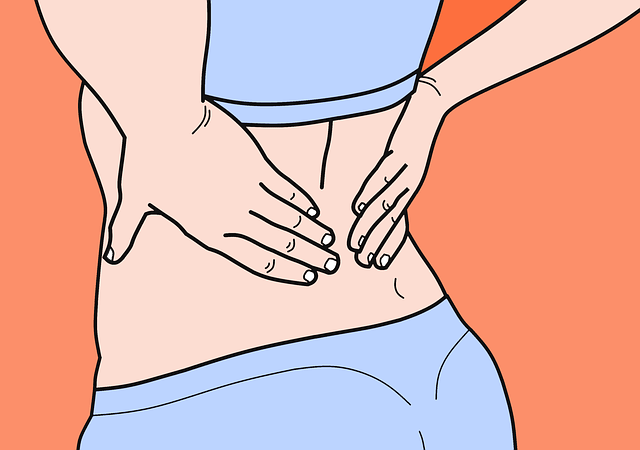 Pregnancy is a joy to behold, but it can also be a pain, literally. While some skate through nine months without a single complaint, no morning sickness, no heartburn, no aches, and pains; there are others that have every single one of these issues and then some.
Pregnancy is a joy to behold, but it can also be a pain, literally. While some skate through nine months without a single complaint, no morning sickness, no heartburn, no aches, and pains; there are others that have every single one of these issues and then some.
One of the complaints is low back pain or sciatica. It’s no fun and makes the entire experience that much harder because then walking, sitting, standing, laying down, moving, etc. causes pain.
There are some ways to make it feel better so we’ll explore that too.
What is Sciatica?
Also known as a Lumbosacral radicular syndrome, sciatica “is caused by irritation of your sciatic nerve which starts in the lumbar or lower spine and ends in the thigh.”[1]
Comfortable it’s not. It can cause pain in the buttocks and the hip as well and the pain can range from dull to sharp and shooting in character, from mild to severe in intensity.
And while it does generally go away on its own when it’s related to pregnancy, it can make the time being pregnant a lot more uncomfortable.
It’s actually something extremely common in pregnancy with about 50 to 80 percent of women reporting this kind of pain during pregnancy. [2]
Why Does Sciatica Erupt During Pregnancy?
One might think that sciatica is caused by the baby pressing down on a nerve, but that’s not necessarily the case; it’s generally caused by muscle tension and unstable joints [3] (which when pregnant this could be because of the hormone relaxin that helps the body prepare for childbirth).
Sometimes the symptoms are also because of other reasons such as piriformis syndrome, which is when the muscles in the buttocks are causing the issue, which mimics sciatic pain extremely well. [4]
The other causes of sciatic pain include spinal stenosis, osteoarthritis or degenerative disc disease.
Now you might be wondering what the baby and the pregnancy has to do with this, but the extra weight on the ligament and joints can also cause pressure and exacerbate other conditions as mentioned above.
Now pregnancy is not the cause of sciatica, it’s just something, as stated above, that can cause exaggeration in a condition that is already there.
One that the mother might not have known about before but the added weight of a baby, along with hormonal changes, can affect how the body reacts, and how it feels.[5]
The sciatic nerve runs under the uterus and the pressure by the developing baby can occasionally cause the pain and irritation.[6]
Symptoms of Sciatica
The symptoms of sciatica, even though they run similar to other disorders, are relatively easy to spot; especially if you have had no issues before.
Shooting and burning pain, generally on one side of the buttocks, and can potentially work its way to the thigh, calf, and foot.
Tingling is also a symptom that you may experience as well. You could also have trouble sitting, standing, or walking.
Remedies for Sciatic Nerve Pain during Pregnancy
There are a lot of different things that you can do to relieve your pain, although you may not be fully comfortable, it can definitely help you feel better.
One thing you can do is a general search on YouTube for back stretches or yoga during pregnancy. These can be extremely helpful because it can show you exactly what to do and how to safely perform the maneuvers.
If you aren’t into yoga (although it feels so good), try lying on your side that doesn’t hurt. This can take the pressure off the nerve.
You can also try a heating pad or an ice pack to help relieve the pain. Stay active well. The more you sit, the more you might hurt.
As long as medically cleared, keep up with your regular workouts as well. It can help keep your body more limber and stronger as well, which can help make you more comfortable. It’s also been said to help make labor easier too.
Another thing you want to do is speak with your doctor. There could also be other underlying causes that are happening and getting those checked out is important.
You can also get a recommendation from a musculoskeletal physiotherapist who specializes in women’s health. They will show you the exercises that can strengthen your pelvic floor as well as stretch out the muscles.
If the pain is unyielding, the doctor may also recommend medication, especially if you are unable to get up and continue your daily tasks because of it.
One of the medications they could prescribe is paracetamol as a painkiller. It helps with pain as you cannot take ibuprofen during pregnancy.
For those that want to try other non-medicinal methods, although not scientifically proven, some claim that acupuncture and/or chiropractic care or prenatal massages (by licensed therapists) helps with the pain.
Ideally, if you want to help reduce the pain, listen to your body. Sitting, standing and walking for extended periods of time can exacerbate the issue.
If you work at a desk job, make sure to get up frequently and walk around, and vice versa.
Sciatic pain is something that many women deal with and can tell you that other than having 20 extra pounds hanging around in front, it causes the most pain the back and can hinder sleeping, and moving, and everything in between.
Find whatever works for you to be comfortable. You’re in it for the long haul, you may as well feel good while growing a person.
References
- Healthline. Sciatica During Pregnancy: Symptoms, Causes, Treatments. [Link]
- ncbi.Pregnancy-related low back pain. [Link]
- See above #1
- See above #1
- Babycentre. Sciatica in Pregnancy. [Link]
- American Pregnancy Association. Pregnancy and Sciatic Nerve Pain. [Link]



